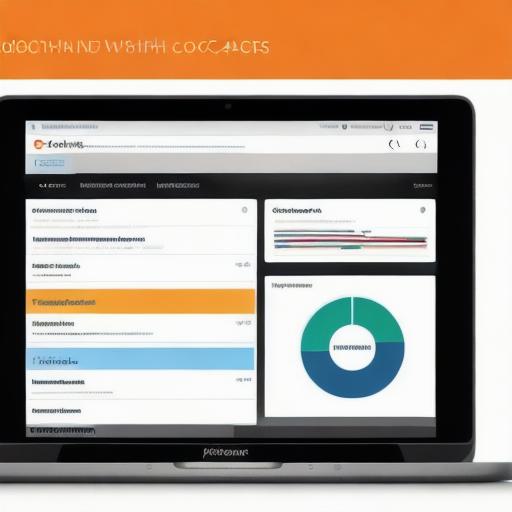Introduction:
Podcasting is a growing trend in content creation, with millions of people tuning in to listen to their favorite shows on a wide range of topics. As more businesses look for ways to reach their target audience, many are turning to podcasts as a powerful marketing tool. However, simply creating a podcast isn’t enough – businesses also need to be able to measure the impact of their efforts and analyze the data to optimize their strategies. That’s where marketing and analytics come in.
In this article, we will explore the benefits of combining marketing and analytics in a podcast format, including case studies and real-life examples that illustrate how these tools can be used to drive engagement, increase audience growth, and ultimately generate more revenue for businesses. We will also discuss the key metrics to track and the best practices for analyzing the data, as well as some tips for creating effective podcasts that are optimized for analytics.
The Benefits of Combining Marketing and Analytics in a Podcast Format:
- Increased Engagement:
One of the biggest advantages of using analytics in podcasting is the ability to track engagement levels and see which episodes resonate best with your audience. By analyzing metrics such as listener ratings, playback rates, and social media shares, businesses can identify which topics and formats are most popular with their listeners and adjust their content strategy accordingly. - Improved Audience Growth:
Another key benefit of analytics is the ability to track audience growth and see how your podcast is performing over time. By analyzing data such as new subscribers, retention rates, and churn rates, businesses can identify areas for improvement and develop strategies to attract more listeners. This can include promoting the podcast on social media, partnering with other businesses or influencers, and optimizing the show’s cover art and description for search engines. - Increased Revenue:
Finally, analytics can help businesses generate more revenue from their podcast by identifying opportunities to monetize the content. This might include sponsorships, advertising, merchandise sales, or even offering premium content for paid subscribers. By analyzing data on listener demographics, interests, and spending habits, businesses can develop targeted marketing campaigns that are more likely to result in conversions and revenue.
Case Studies:

- The Joe Rogan Experience:
The Joe Rogan Experience is one of the most popular podcasts in the world, with millions of listeners tuning in each week to hear interviews with celebrities, comedians, and experts on a wide range of topics. By using analytics tools to track engagement levels and listener demographics, the show’s creators have been able to develop a highly targeted marketing strategy that has helped them grow their audience and increase revenue.
- Stuff You Should Know:
Stuff You Should Know is another popular podcast that has used analytics to drive growth and revenue. By analyzing data on listener engagement and demographics, the show’s creators have been able to identify which topics and formats are most popular with their audience and develop strategies to create more of what works. This has included partnering with other businesses and influencers, promoting the show on social media, and even launching a merchandise line based on the podcast’s themes. - The Tim Ferriss Show:
The Tim Ferriss Show is yet another successful podcast that has used analytics to drive growth and revenue. By analyzing data on listener engagement and demographics, the show’s creators have been able to identify which topics and formats are most popular with their audience and develop strategies to create more of what works. This has included partnering with other businesses and influencers, promoting the show on social media, and even launching a premium membership program for paid subscribers.
Key Metrics to Track:
- Listenership:
The first metric to track is the total number of listeners for each episode. This will give you an idea of how popular the content is and help you identify which episodes are driving the most engagement. - Engagement Rates:
In addition to overall listenership, it’s important to track engagement rates such as ratings, reviews, and playback rates. These metrics will give you a better understanding of how well your content is resonating with your audience and help you identify which topics and formats are most popular. - Demographics:
By analyzing listener demographics such as age, gender, location, and interests, you can develop targeted marketing campaigns that are more likely to appeal to your target audience. - Revenue:
Finally, it’s important to track revenue generated from the podcast, whether through sponsorships, advertising, merchandise sales, or premium subscriptions. This will help you understand how well your podcast is performing financially and identify areas for improvement.
Best Practices for Analyzing the Data:
- Use Analytics Tools:
There are a variety of analytics tools available that can be used to track metrics such as listenership, engagement rates, demographics, and revenue. Some popular options include Google Analytics, Apple Podcasts Analytics, and Mixpanel. - Set Goals and KPIs:
Before you start collecting data, it’s important to set clear goals and key performance indicators (KPIs) that will help you measure the success of your podcast. These might include increasing listenership, improving engagement rates, or generating more revenue. - Regularly Review the Data:
It’s important to regularly review the data and analyze it to identify trends and patterns that can help you optimize your content strategy. This might involve looking at metrics such as which topics are most popular with your audience, which formats work best, or which marketing campaigns are driving the most engagement. - Act on the Data:
Finally, it’s important to act on the data by making changes to your content strategy based on what you see in the analytics. This might involve adjusting the topics you cover, changing the format of your show, or developing targeted marketing campaigns that are more likely to appeal to your target audience.
Tips for Creating Effective Podcasts Optimized for Analytics:
- Keep Your Content Relevant and Engaging:
One of the most important things to keep in mind when creating a podcast is to make sure the content is relevant and engaging for your target audience. This will help you drive listenership and improve engagement rates. - Use Clear and Concise Language:
When creating your podcast, it’s important to use clear and concise language that is easy for your listeners to understand. Avoid using jargon or complex terminology that might confuse your audience. - Optimize Your Cover Art and Description:
Your cover art and description are the first things potential listeners will see when browsing for your podcast on platforms like Apple Podcasts or Spotify. Make sure to optimize these elements with keywords that describe your content and make it easy for people to find your show. - Engage With Your Audience:
Another important aspect of creating an effective podcast is engaging with your audience. This might involve responding to listener questions and feedback, hosting live events or webinars, or even creating merchandise or other products that tie into your content. - Use Analytics to Optimize Your Content Strategy:
Finally, it’s important to use analytics to optimize your content strategy over time. By tracking metrics such as listenership, engagement rates, and revenue, you can identify which topics and formats are most popular with your audience and develop targeted marketing campaigns that are more likely to appeal to your target audience.
FAQs:
- How do I track my podcast’s performance?
There are a variety of analytics tools available that can be used to track metrics such as listenership, engagement rates, demographics, and revenue. Some popular options include Google Analytics, Apple Podcasts Analytics, and Mixpanel. - What are the best practices for analyzing the data?
It’s important to set clear goals and KPIs before you start collecting data, regularly review the data to identify trends and patterns, and act on the data by making changes to your content strategy based on what you see in the analytics. - How do I create an effective podcast optimized for analytics?
Some tips for creating an effective podcast optimized for analytics include keeping your content relevant and engaging, using clear and concise language, optimizing your cover art and description, engaging with your audience, and using analytics to optimize your content strategy over time.




